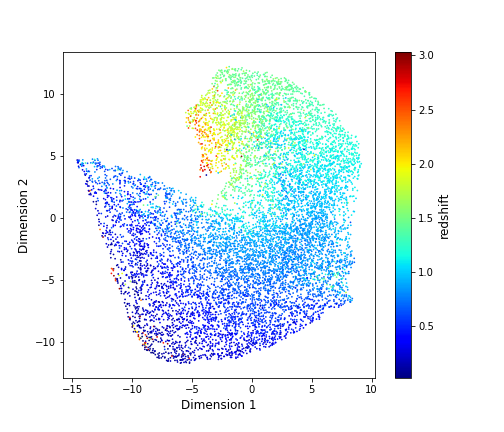Simulating the distribution of galaxy redshifts
LSST will observe more than 20 billion galaxies over the course of 10 years, which will allow us to create one of the largest three-dimensional maps of the universe to date. However, inferring the exact distances of extragalactic objects proves to be challenging, since these can only be determined indirectly by measuring the spectrum of the observed light. LSST will measure the brightness of galaxies through six filters which is used to estimate a photometric redshift of the object. This technique makes use of the observation that distant galaxies are moving away from us due to the expansion of the universe. Light received from these galaxies is therefore shifted towards longer wavelengths so that they appear to be redder. The observed redshift can then be related to the physical distance of the galaxy. However, since the spectrum of galaxies is observed through rather broad filters, scatter and misidentifications between true redshift and photometric redshift occur. In order to constrain the large-scale structure of the Universe with LSST data we need to mitigate the effect of noise and outliers in the photometric redshift determination. In preparation for the analysis of LSST data, we are using simulations to develop methods to optimise the determination of redshifts in LSST’s galaxy survey.

Figure 1: This figure shows a simulated dataset containing 10000 galaxies from a study by Benjamin Stolzner, Benjamin Joachimi and Andreas Korn (University College London). They applied Uniform Manifold Approximation and Projection (UMAP), a technique for dimensional reduction, to transform the data from galaxy brightness in the six LSST filters to an abstract two-dimensional space. The different colours indicate the true redshift of each galaxy. The plot indicates that this method helps separating galaxies by redshift without prior knowledge of the photometric redshift estimate. Further information about the UMAP algorithm can be found at: https://arxiv.org/abs/1802.03426.